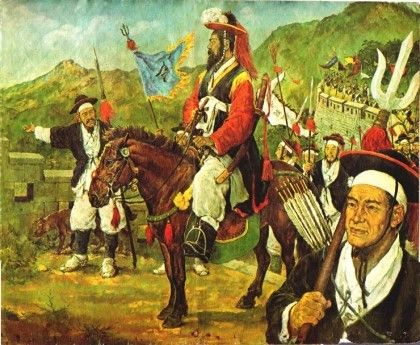
Stalemate
Seoul, South KoreaAfter the Battle of Byeokjegwan, the Ming army took a cautious approach and moved on Hanseong again later in February after the successful Korean defense in the Battle of Haengju.
The two sides remained at a stalemate between the Kaesong to Hanseong line for the next couple of months, with both sides unable and unwilling to commit to further offensives. The Japanese lacked sufficient supplies to move north, and the defeat at Pyongyang had caused part of the Japanese leadership such as Konishi Yukinaga and Ishida Mitsunari to seriously consider negotiating with the Ming dynasty forces. This got them into a heated debate with other hawkish generals such as Katō Kiyomasa, and these conflicts would eventually have further implications following the war in Japan when the two sides became rivals in the Battle of Sekigahara.
The Ming forces had their own set of problems. Soon after arriving in Korea the Ming officials began to note the inadequate logistical supply from the Korean court. The records by Qian Shizhen noted that even after the Siege of Pyongyang the Ming forces were already stalled for nearly a week due to the lack of supplies, before moving on to Kaesong. As the time went on the situation only become more serious. When the weather warmed, the road condition in Korea also became terrible, as numerous letters from Song Yingchang and other Ming officers attest, which made resupplying from China itself also a tedious process.
The Korean countryside was already devastated from the invasion when the Ming forces arrived, and in the heart of winter it was extremely difficult for the Koreans to muster sufficient supplies. Even though the court had assigned the majority of the men on hand to tackle the situation, their desire to reclaim their country, along with the militarily inexperienced nature of many of their administrators, resulted in their continual requests to the Ming forces to advance despite the situation. These events created an increasing level of distrust between the two sides.
Though by mid April 1593, faced with ever-greater logistical pressure from a Korean naval blockade of Yi Sun-sin in addition to a Ming force special operation that managed to burn down a very significant portion of the Japanese grain storage, the Japanese broke off talks and pulled out of Hanseong.
